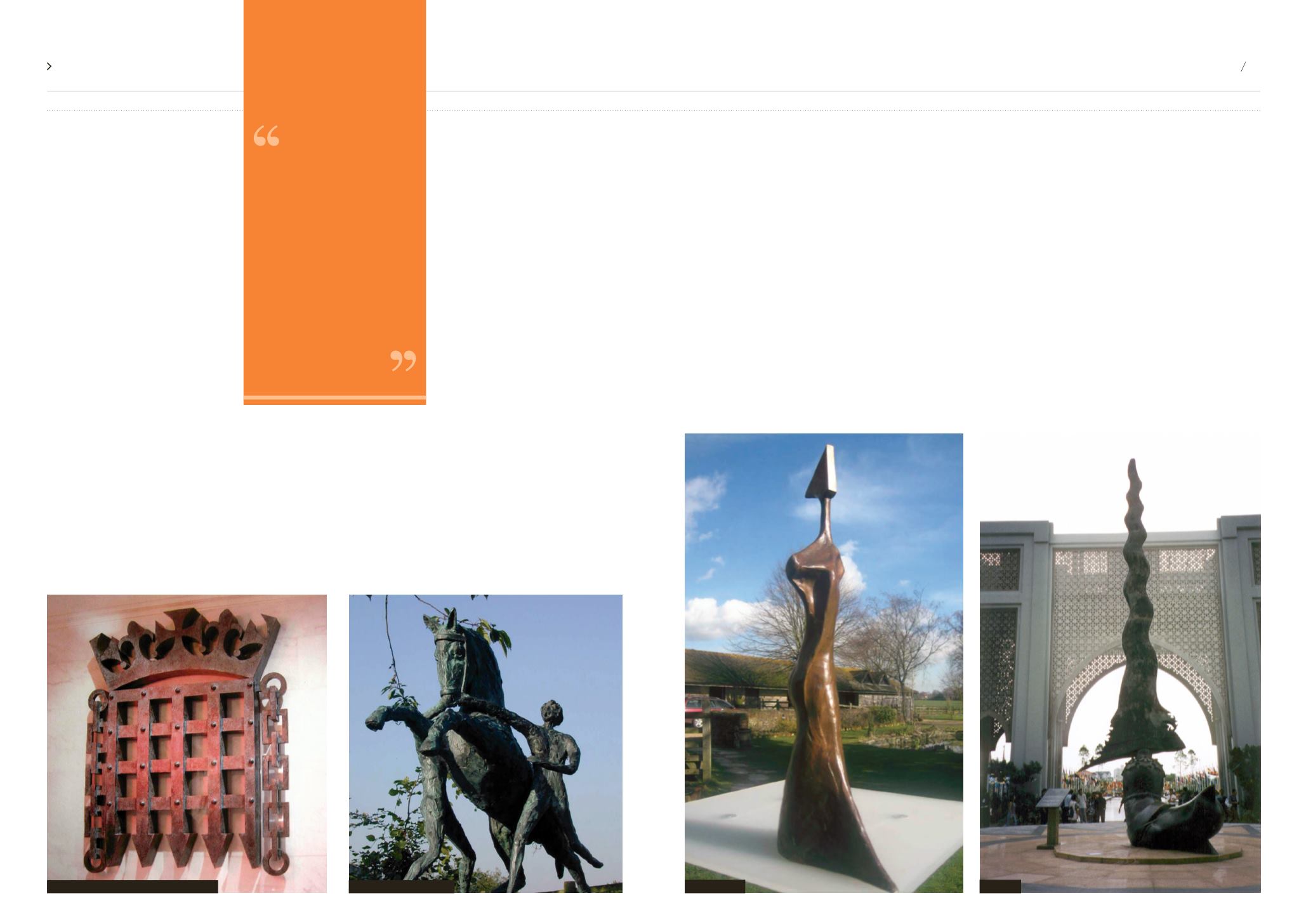

12
13
Concordia
Merchant Taylors’ School
I even owned
Monacle, an
amazing horse
that came
second at
Badminton in
1979 and was
selected for the
1980 Moscow
Olympic Games.
Summer
2015
Life in practice was wonderful. We built
a brilliant team, invested in the best of
equipment, worked ourselves to the bone,
did a multitude of post graduate courses
and after nearly four decades ended up with
a huge international reputation. I was also
an active City of London Barber Surgeon
and rebuilt the company library and helped
redesign the Gerard Herb Garden.
Implantology arrived and I was one
of the first to use it. Crown and Bridge
technology blossomed, bonding metal
to porcelain and later finding porcelains
strong enough to need no metallic
support and all the while I kept up the
oral surgery by operating in the evenings
in many of London’s private hospitals
often taking out wisdom teeth.
We began to do extensive oral
reconstructions on badly damaged
mouths, making major changes to
people’s lives. We could offer superb
aesthetics with the backing of the
Regent Dental Laboratory. The days of
inevitable full dentures, which we had all
been trained to make, were on their way
out. All these technical advances had
to be based on good dental hygiene so
I pioneered prevention too and in 1978
launched a new clinic in Devonshire
Place, near Harley Street, with two
other colleagues. It was called the Oral
Hygiene Centre and was the first of its
kind in the world. The idea was to provide
the services of a large team of Dental
Hygienists under the supervision of one
Dental Surgeon to make prevention the
priority and lower the cost of providing
better dental health.
Hygienists, I explained to the
politicians, are cheaper to train; they
require minimal equipment, and the
fear level for patients should be less too,
with no drilling. I imagined a worldwide
Oral Hygiene Centre franchise but the
dream was somewhat thwarted by both
politicians and the profession. In the
USA, where I also introduced the idea,
state laws only allowed hygienists to
work one to one with surgeons and under
their direct supervision. I think I was a
few years ahead of my time; most dentists
now have their own hygienists and I
believe they are the most important part
of any practice.
Not long after the start of my career
in 1972 I had been unfortunate enough
to experience synchronous bilateral
malignant seminoma and was advised
I might only have a short time to live.
It was only six months after my first
marriage to Sue. I was lucky enough to
be completely cured by two wonderful
surgeons and aggressive radiotherapy,
and while recovering I took up riding.
Sue and I bought a weekend cottage
in Wiltshire and I took to horses like a
duck to water, ending up riding one and
three day events. I even owned Monacle,
an amazing horse that came second at
Badminton in 1979 and was selected for
the 1980 Moscow Olympic Games. Sadly,
Mrs Thatcher asked our team to withdraw
as a protest against Russia’s occupation
of Afghanistan – somewhat ironic in
hindsight – but I still can’t live without
horses in my life.
But now it was 1987 and I suffered a
second setback. I contracted Hepatitis
B from a needle stick injury. Bright
yellow and feeling very ill my doctor
informed me that if I didn’t clear the virus
I wouldn’t be able to practice again! I
recovered, but during the 4 months away
from practice, I had taught myself how
to make sculpture. It is a similar hand-
eye skill to creating beautiful crowns in
dentistry. Rather than a dental laboratory
you use a foundry; rather than casting a
gold inlay you cast a bronze.
I had collected art for my home for
many years. Sue was a PA to a director at
Christie’s so I spent a lot of time in the
auction rooms just looking and acquiring
know-how. Earlier in my life my father
was awarded an FRPS as an amateur
photographer. He often let me help in
the dark room, developing and printing
black and white photographs and I can
well remember his first coloured print.
He had taught me to put objects on the
thirds in a photographic field and to view
a scene through a pin hole made with
my fingers before taking a photograph.
I had, without knowing it, developed a
seeing eye.
Later that year and fully recovered,
I was introduced to the Burleighfield
Foundry at Beaconsfield who began
to cast in bronze for me using the lost
wax technique. The directors there had
made Barbara Hepworth’s work and I
met Elizabeth Frink and Lynn Chadwick
(another OMT) and became surrounded
by great sculptors, many of whom
became friends.
I soon had the unique situation of
having a wonderful practice full of
interesting patients with my own art
works decorating the house and people
beginning to collect my work. Suddenly
commissions came flying in. I thought
about retiring from practice but I hadn’t
quite got the will to be a full-time
artist and what was happening suited
me well - I had the ideal day job and the
night time and weekend one too.
I remarried and my wife Auriol joined
me, designing and making sculpture.
Many of our heroic works were made
in partnership.
Portcullis and Crown at No 1 Parliament Street
The Race for Riderless Horses
Mother Superior
The Keris









